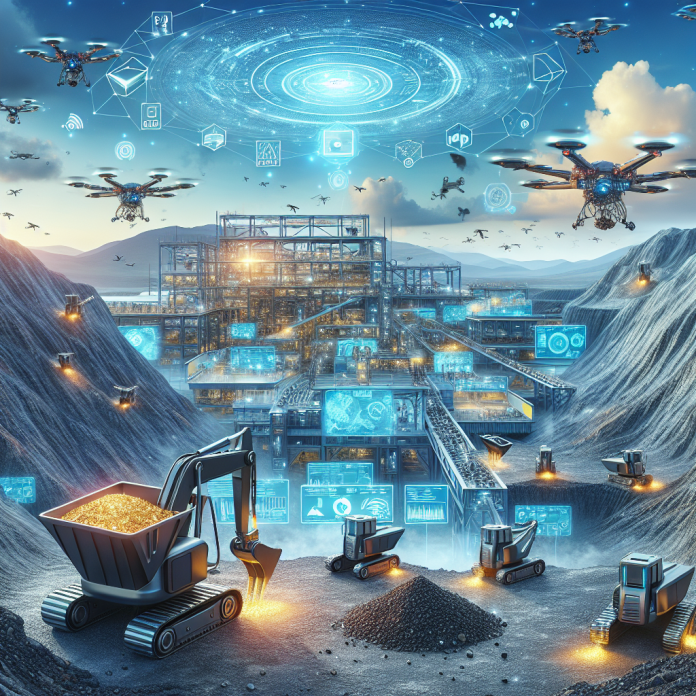Artificial intelligence (AI) has been revolutionizing various industries and mining is no exception. From exploration to extraction and safety monitoring, AI is transforming the way mining operations are conducted. In this article, we will delve into the role of AI in mining, exploring its applications, benefits, and potential challenges.
### Exploring New Frontiers: AI in Mining Exploration
Mining companies have traditionally relied on geologists and engineers to identify potential mineral deposits. However, AI is now being used to streamline the exploration process by analyzing vast amounts of geological data more efficiently. By utilizing machine learning algorithms, AI can identify patterns and anomalies in geological datasets that are often overlooked by humans.
For example, Goldspot Discoveries, a Canadian mining technology company, has been using AI to analyze geological data and identify new drill targets. By leveraging AI algorithms, Goldspot Discoveries has been able to significantly increase the success rate of their drilling operations, leading to more efficient and cost-effective exploration.
### Maximizing Extraction Efficiency with AI
Once a mineral deposit has been identified, mining companies can leverage AI to optimize the extraction process. AI-powered software can analyze real-time data from sensors installed in mining equipment to monitor operational efficiency, predict equipment failures, and optimize workflow.
One notable example is Rio Tinto, one of the world’s largest mining companies, which has been using AI to automate their haul trucks and trains in their iron ore mines in Australia. By implementing autonomous vehicles controlled by AI algorithms, Rio Tinto has been able to increase productivity, reduce operational costs, and improve worker safety.
### Ensuring Safety and Environmental Compliance
Safety is a top priority in the mining industry, and AI has been instrumental in enhancing safety measures and reducing accidents. AI-powered systems can analyze data from sensors, cameras, and drones to monitor worker activities, detect potential hazards, and alert personnel in real-time.
For instance, Inmarsat, a British satellite telecommunications company, has developed an AI-powered monitoring system that uses satellite technology to track equipment and personnel in remote mining sites. By analyzing data collected from wearable sensors and satellite imagery, the system can identify potential safety risks and ensure compliance with environmental regulations.
### Overcoming Challenges: The Potential of AI in Mining
While AI offers numerous benefits to the mining industry, there are also challenges that need to be addressed. One major concern is the potential displacement of jobs due to automation. As mining companies increasingly rely on AI-powered technologies, there is a risk that traditional mining jobs may become obsolete.
To address this issue, mining companies need to invest in training and upskilling their workforce to adapt to the new technologies. By providing employees with the necessary skills to work alongside AI systems, mining companies can ensure a smooth transition to a more automated and efficient mining operation.
### The Future of AI in Mining: A Sustainable Approach
As technology continues to advance, the future of AI in mining looks promising. AI-powered systems hold the potential to revolutionize the industry by increasing efficiency, improving safety, and reducing environmental impact. By embracing AI technologies, mining companies can create a more sustainable and profitable future for the industry.
In conclusion, AI is playing a crucial role in the mining industry, transforming traditional mining practices and paving the way for a more efficient and sustainable future. By harnessing the power of AI, mining companies can unlock new opportunities, improve operational efficiency, and ensure the safety of their workforce. As the mining industry continues to evolve, AI will undoubtedly be at the forefront of innovation, shaping the future of mining for generations to come.

